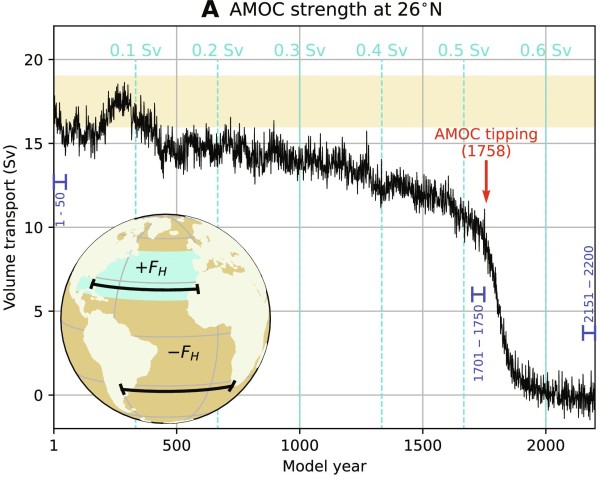The Atlantic Meridional Overturning Circulation (AMOC) transports warm and salty upper ocean water to the subpolar North Atlantic where the upper ocean releases some heat to the atmosphere. Due to the surface cooling and the high salinity (i.e., salty), the upper ocean water becomes heavier and thus sinks down to the deep ocean and then... Continue Reading →
Climate and weather scientists in the U.S. don’t talk to each other
As a climate scientist, I have worked and interacted with many weather scientists in the past 20 years or so. I am also currently in a task force team to advance subseasonal (2~4 weeks) forecasts of severe weather activity in the U.S. I have learned so much from weather scientists about how longer-term climate processes... Continue Reading →
Why is it hard to identify the subpolar and subtropical jets from zonal-mean zonal wind profiles?
Two important atmospheric jet streams that shape the extratropical zonal wind field in both hemispheres are the subtropical jet and the subpolar jet. The subtropical jet is located around 30° latitude line at the boundary between the Hadley cell and the Ferrel cell, and is predominantly a high-altitude feature. Since it is largely in thermal-wind... Continue Reading →
Useful editing tips from climate science editor
Michael White is a climate science editor for Nature. He posted on Twitter a list of useful tips for climate scientists to consider before they submit their work to Nature or other journals. Personally, I would like to stress his suggestion to avoid subjective wording like “unprecedented”, “dramatic”, and “remarkable”. Such a subjective word gives... Continue Reading →
3 most memorable reviews … so far
Throughout my career, I have published many scientific papers and reviewed even more papers. So, I have received or encountered many interesting reviews. Here are the 3 most memorable comments that I have received so far. #3) "The paper is very poorly written, lacks objective detail, and makes fatal flaw assumptions about the role of... Continue Reading →
MJO-driven onset of the 2021 Atlantic Niño
Atlantic Niño is the Atlantic counterpart of El Niño in the Pacific, often referred to as El Niño's little brother. It was previously thought to have only regional influence on rainfall variability in West Africa, but a growing number of studies have shown that Atlantic Niño also plays an important role in the development of... Continue Reading →
On the fate of the 2023-24 El Niño
As of July 2023, the developing El Niño in the Pacific has already exceeded its sea surface temperature (SST) anomalies of 1°C in Niño3.4 region (central Pacific) and 3°C in Niño1+2 region (far eastern Pacific). This is the first time to have those SST thresholds exceeded since the development of 1997-98 "supper El Niño" in... Continue Reading →
How did excessive Labrador Sea convection in the 1990s increase the AMOC?
The Overturning in the Subpolar North Atlantic Program (OSNAP) observing system, which was launched in the summer of 2014 comprises an integrated coast-to-coast array of two sections: OSNAP West, extending from the southeastern Labrador shelf to the southwestern tip of Greenland, and OSNAP East, extending from the southeastern tip of Greenland to the Scottish shelf.... Continue Reading →
Is the AMOC shutting down soon?
The Atlantic Meridional Overturning Circulation (AMOC) is the Atlantic component of the global ocean conveyor belt, which is a large-scale ocean circulation system that connects the Arctic, Atlantic, Indian, and Pacific Oceans via the Southern Ocean. Predominantly driven by deep convection in the high-latitude North Atlantic Ocean, the AMOC carries heat, salt, carbon, and other... Continue Reading →
Your suggestion “rejected” in a shared online document?
Online document-sharing service has revolutionized the way scientists share documents and interact with collaborators. Google Docs is probably the most widely used online document-sharing service. I use it almost every day for work and to share scientific paper drafts with coauthors. It is very convenient and facilitates collaboration between co-authors. For instance, a co-author can... Continue Reading →










